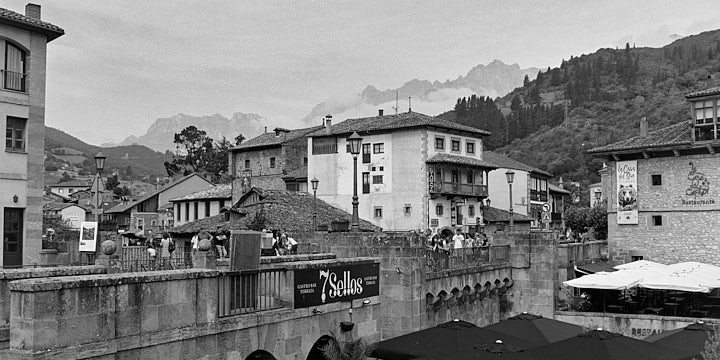Potes is a picturesque town in the foothills of the Picos de Europa mountain range, offering history, stunning natural scenery and outdoor recreational opportunities.
Click on any photo to see a larger version.
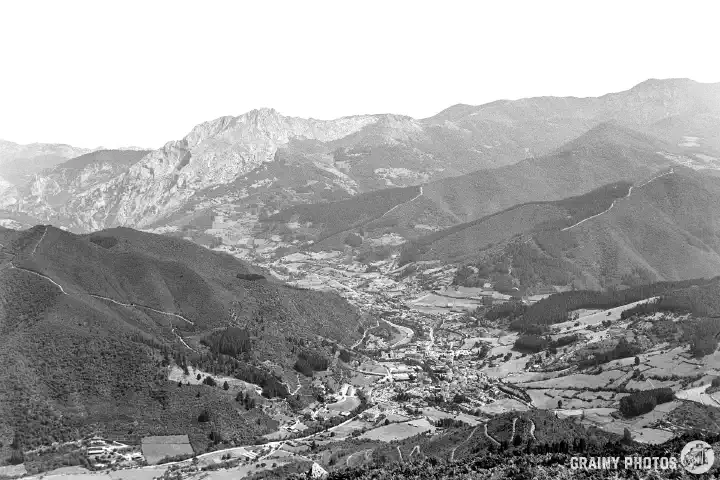
The old part of Potes has plenty of history, narrow winding streets, traditional stone houses, and medieval bridges. One of the notable landmarks is the Torre del Infantado, a medieval tower that stands prominently in the town.
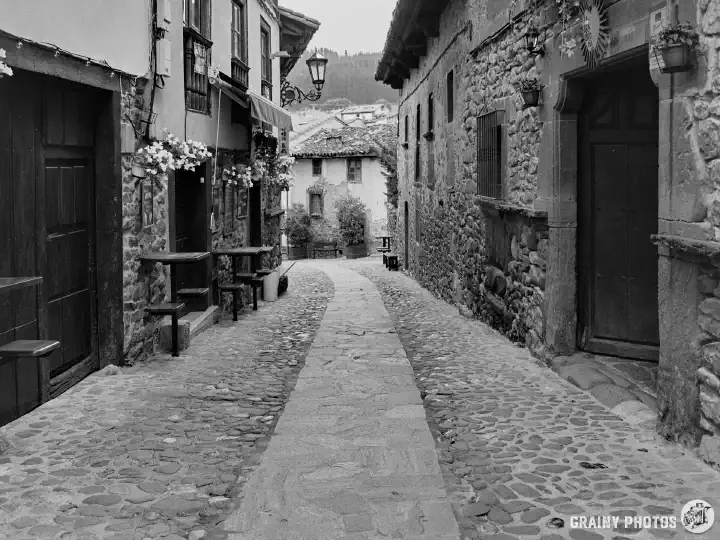
History
The area around Potes has been inhabited since ancient times, with evidence of human presence dating back to prehistoric eras. The Romans occupied the region and left their mark in the form of roads, bridges, and other infrastructure.
Potes grew in importance during the medieval period as a trading centre and a defensive stronghold due to its strategic location at the crossroads of several important routes through the Cantabrian Mountains. It became a hub for commerce and cultural exchange between the coastal and inland regions.
Like much of the Iberian Peninsula, Potes was subject to the Christian Reconquest against Moorish rule during the Middle Ages. The Christian kingdoms gradually expanded into the region, and Potes became part of the Kingdom of León.
The Tower of the Infantado
One of the most iconic landmarks in Potes is the Torre del Infantado, a medieval tower that served as a defensive structure during the Middle Ages. It was built by the powerful Mendoza family in the 15th century and later became the residence of the Counts of Cabezón.
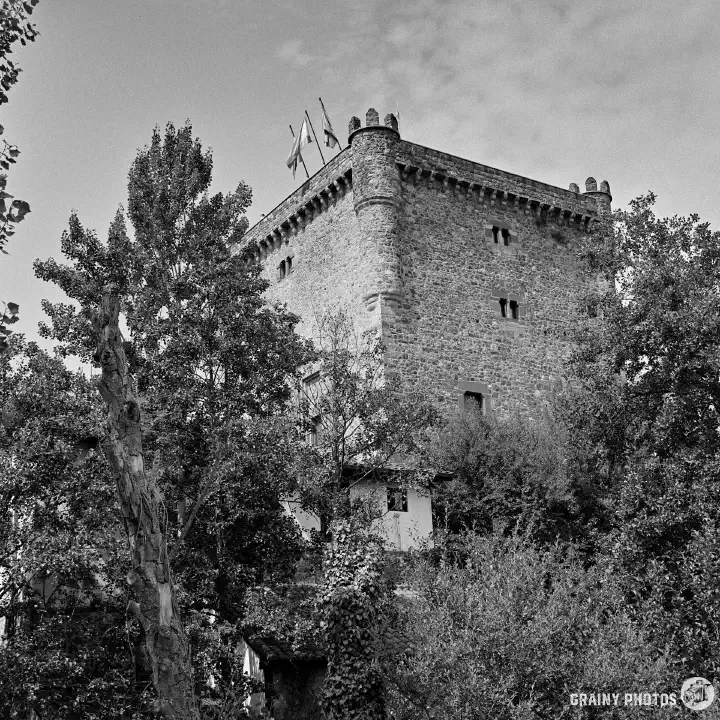
The old town
In recent decades, Potes has experienced a boom in tourism due to its picturesque setting in the Liébana Valley and its proximity to the Picos de Europa National Park. Visitors are drawn to its historic architecture, cultural heritage, medieval charm, narrow cobblestone streets, traditional stone buildings and outdoor recreational opportunities.
Many of the houses in the old part of Potes are built from local stone, which was readily available in the surrounding area. Using stone provides strength and durability and lends a rustic and timeless appearance to the buildings. We will explore the old part of the town in this post. Let’s go…
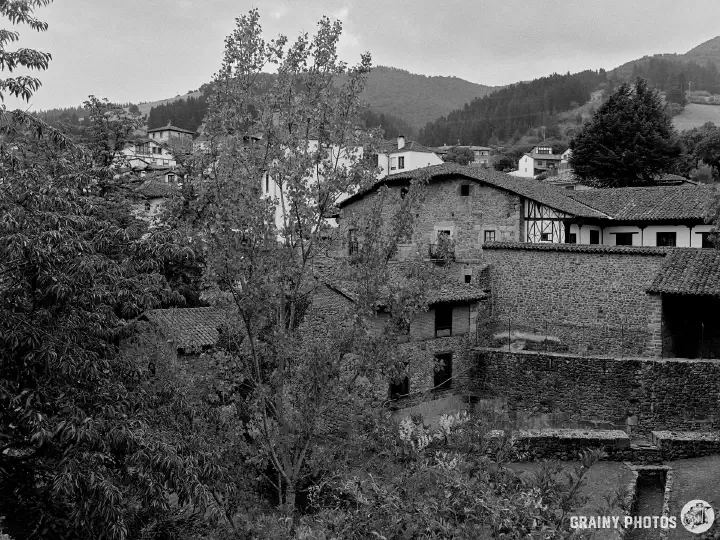
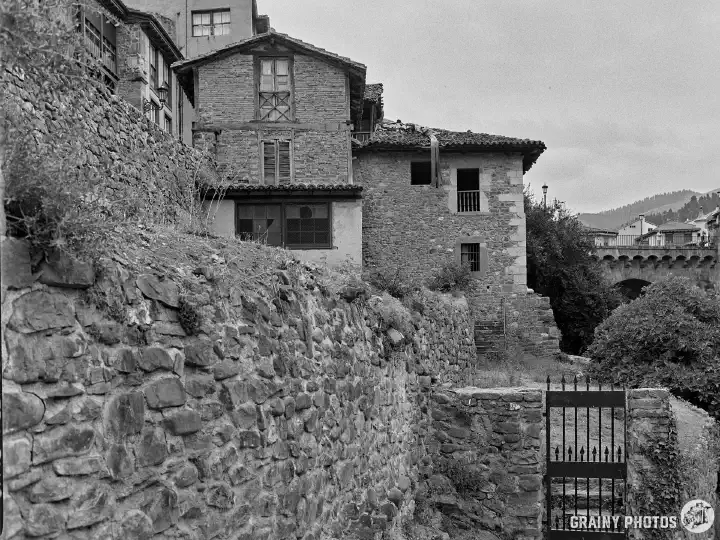
The houses in the old part of Potes are often clustered closely together along narrow, winding streets. The streets are typically paved with cobblestones, further enhancing the area’s historic atmosphere. Cobblestone streets are common in medieval towns and provide a charming backdrop for pedestrians and visitors.
Let’s go and wander around the narrow, pretty, cobbled streets in the old town:
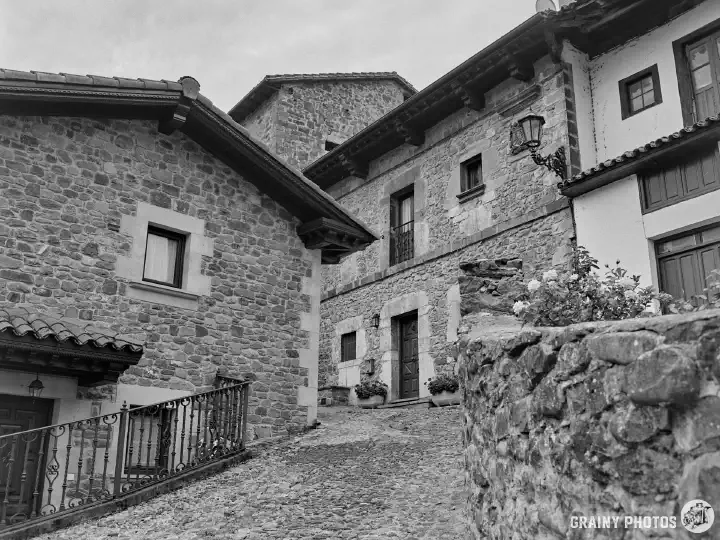

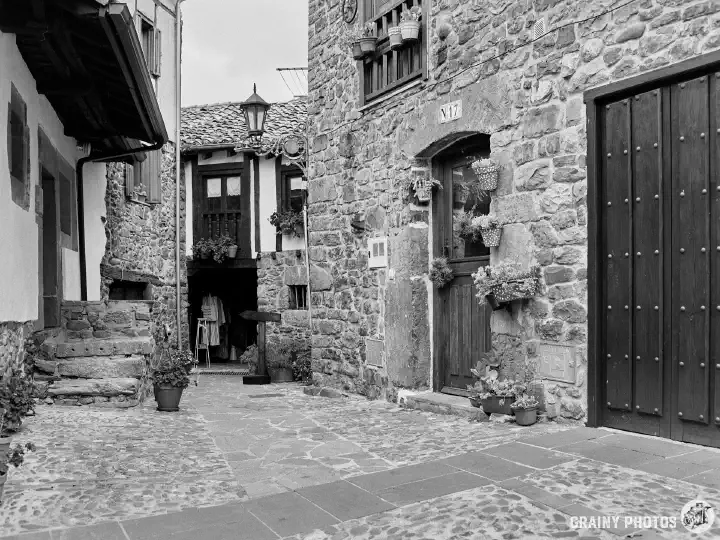
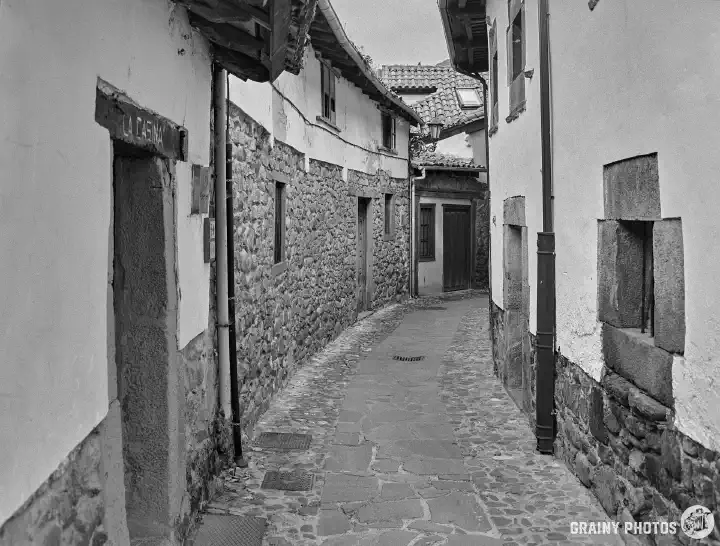

Traditional houses in Potes often feature exposed wooden beams, both on the exterior and interior. These beams are typically made from sturdy hardwoods such as oak or chestnut and add structural support to the buildings. They also contribute to the aesthetic appeal of the architecture and are often used for balcony construction.
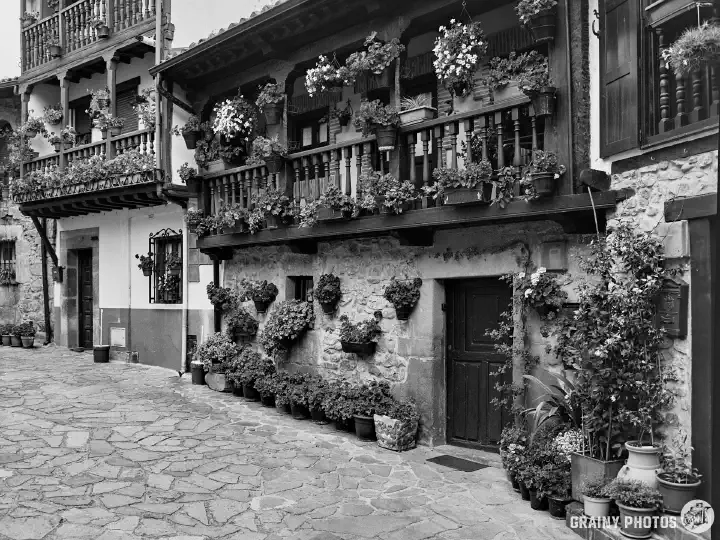

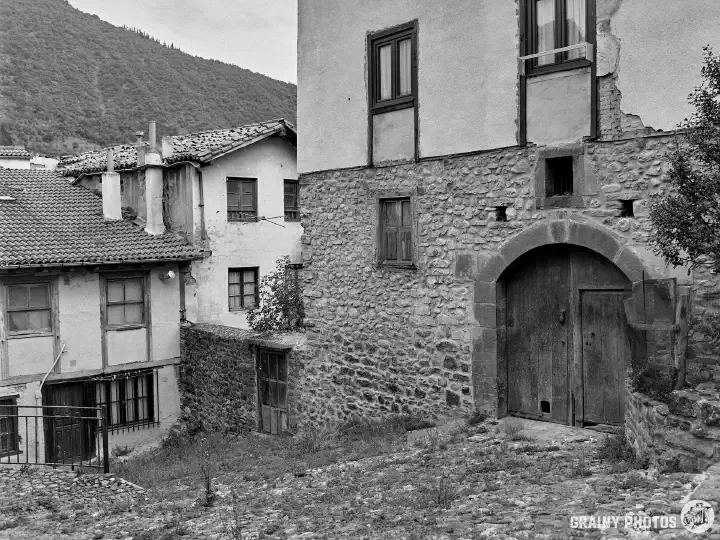
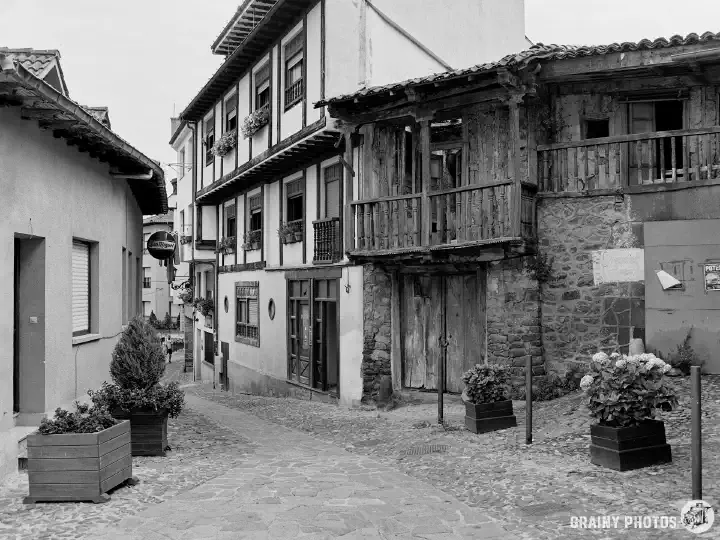
Plazas or squares in Spanish towns and cities often serve as gathering places, where locals and visitors alike come together for various events, socializing, or simply enjoying the ambiance. Plaza del Capitán Palacios, located between the main road through Potes and the river, is just such a place. There are a number of bars and cafes on a lower level by the river where you can enjoy a drink and tapas and watch the world go by.

The bridges of Potes
Potes is known for its historic bridges across the Quviesa and Deva rivers. The bridges are notable landmarks in the town, and it is possible to explore them by following footpaths along the river banks for almost two kilometres. Walking in the river bed or even in the water is possible in several places.
Puente de San Cayetano
The medieval bridge of San Cayetano is the oldest bridge in Potes; it was built in the 14th century. It is located in the old town of Potes, spanning the Quiviesa River and links the neighbourhoods of Fuente la Riega and Tullo with the Barrio del Sol.
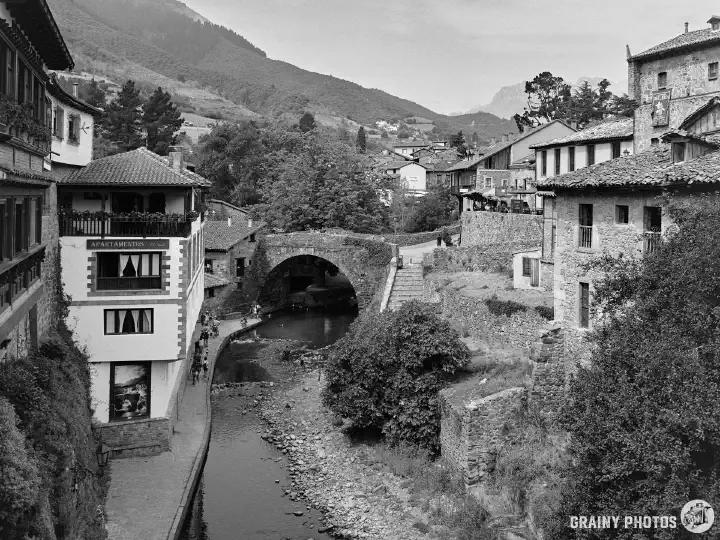
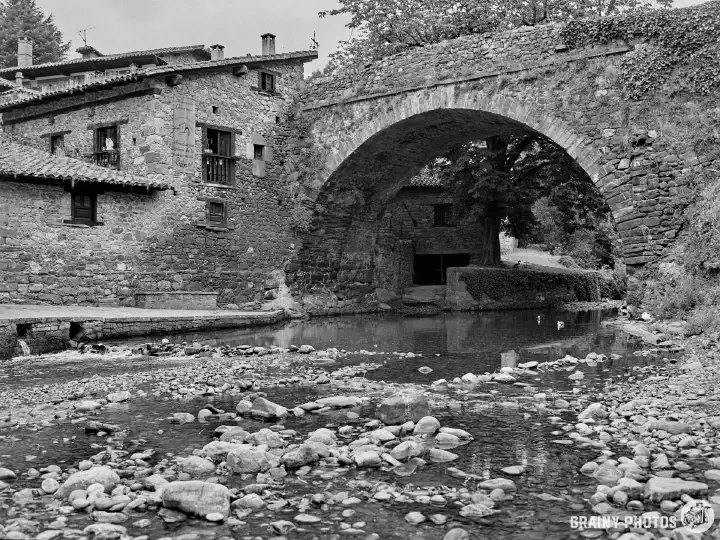
El Puente Nuevo
“El Puente Nuevo” is the main bridge in Potes and the only one that carries road traffic across the Quiviesa River.
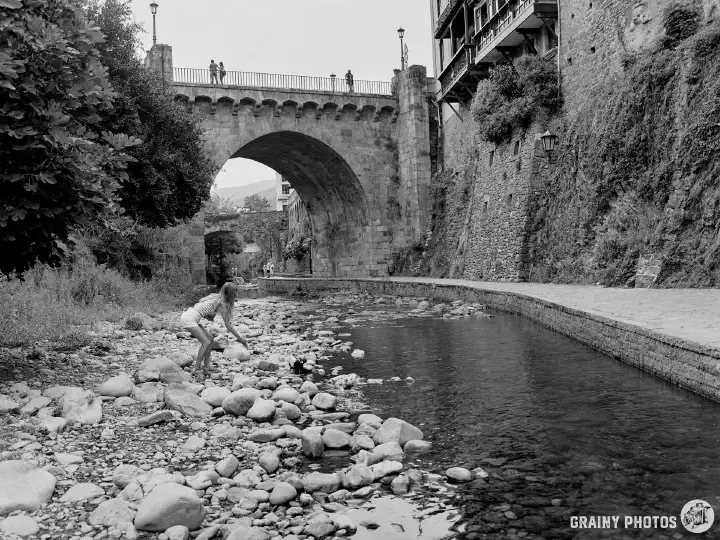

El Puente de la Cárcel
El Puente de la Cárcel (the Prison Bridge) is located in the old town of Potes, very close to the Infantado tower, near the junction of the Quiviesa and Deva rivers. It is of stone arch construction and dates back to the 15th century. The bridge’s name is derived from the Infantado Tower, which was used as a prison for 350 years.
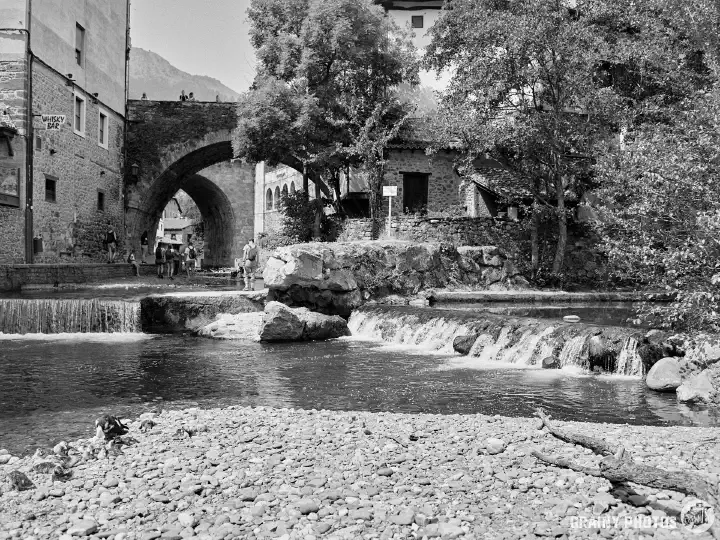
Footbridge
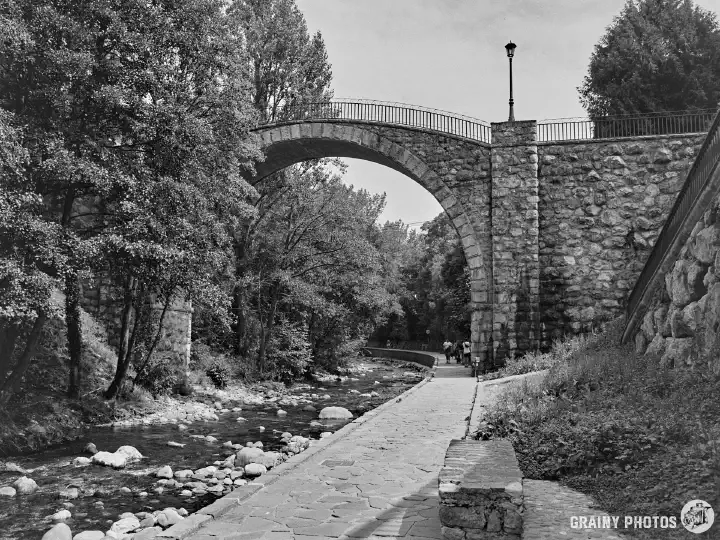
Film photo details
I took all but one of the photos on this page using a Mamiya M645 camera with Ilford FP4 film. Developer: Ilfotec LC29, 1+19, for 7.5 minutes @20C.
The photos were digitised using a Nikon Z6 mirrorless digital camera with a Tokina AT-X Pro Macro 100mm f2.8 D lens and processed using Capture One software.
Film roll No’s 270 and 271a
See more posts about Places in Spain.